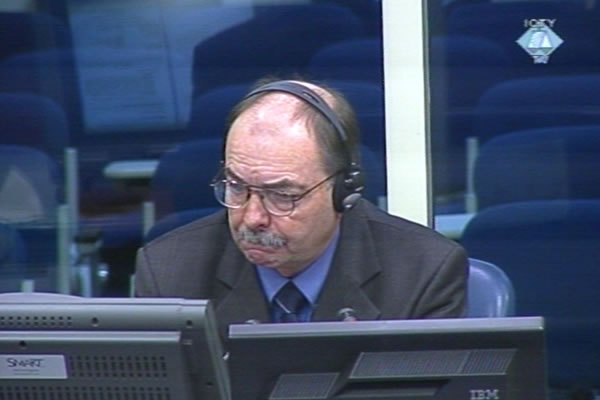Home
THE DAY FIRE RAINED ON SARAJEVO: 3,777 SHELLS IN 12 HOURS
Former UN military observer and member of the UNPROFOR team investigating the first Markale market massacre started his testimony today at the trial of Ratko Mladic. As the witness recounted, there was a day during his stay in Sarajevo when the Bosnian Serb army fired almost 4,000 shells on the city in 12 hours
 John Hamill, witness at the Ratko Mladic trial
John Hamill, witness at the Ratko Mladic trial The trial of Ratko Mladic continued with the evidence of John Hamill, Irish colonel and former UN military observer in Sarajevo. Hamill was a member of the UNPROFOR team that investigated the massacre in the Markale market on 5 February 1994. The witness’s evidence at the trial of General Stanislav Galic was admitted into evidence together with the report on the massacre which killed 66 persons.
Hamill was in Sarajevo as a UN military observer from May to August 1993, and was back in February 1994 as a technical advisor to the team investigating the Markale massacre. During the investigation, the witness talked to VRS colonel Radoslav Cvetkovic, who confirmed that ’30,000 to 40,000 shells’ had been fired on the city the previous year and wondered why so much fuss was made about a single shell that fell on the Markale market.
Describing the situation in Sarajevo while he was there, Hamill said that in late July 1993 3,777 shells were fired on the city in just 12 hours. In that period, there were parts of the city that the UN observers couldn’t enter, Hamill said, because ‘armed gang leaders’ didn’t allow them to. In that context, Hamill mentioned the Chetnik vojvoda, war leader, Vasilije Vidovic; Hamill personally ran afoul of Vidovic. Hamill was told that Vidovic was under the command of the VRS general Josipovic, who was in charge of the best part of the sector to the north of Sarajevo.
Just as he did at Galic’s trial, Hamill today confirmed that the investigation he was part of concluded that the 120 mm mortar shell that hit the market had been fired from the northeast. It was however not possible to determine the specific position. Two positions of the BH Army and four of the Bosnian Serb army were identified as possible origins of fire.
Defense counsel Dragan Ivetic tried to establish that the BH Army used a ‘fire and run’ tactic: they opened fire from portable mortars and moved them around the city. The witness allowed the ‘possibility’ that the shell that hit the Markale may have been fired from a portable mortar. In the re-examination, when the prosecutor asked him if he had found any evidence that the shell had been fired from a mortar on the BH Army side, the witness replied that there was no such evidence. The witness also agreed with the defense counsel that there was a ‘police building or some sort of a HQ’ 300 meters from the town market.
In 2001 the witness was asked by the prosecution to examine two craters in Dobrinja linked to the incident of 1 June 1993 when shells exploded amid the people who had been watching a football game. The indictment alleges that more than ten persons were killed in the explosion and about 100 were wounded. In his statement on the Dobrinja crater analysis, the witness said it was impossible to establish specifically whether the round had been fired from a cannon or a mortar. The witness agreed with the defense counsel’s suggestion that a portable mortar fired from the Muslim side may have caused the craters. In the re-examination, the witness explained to the prosecution that when portable mortars were used, the military unit responding to the fire shouldn’t target the location from which the fire had been opened but the actual portable mortar in its new position.
During the break after the first session, Mladic complained of vertigo and high blood pressure. Half an hour later, Mladic was back in court after the doctor confirmed he was capable of following the trial.
